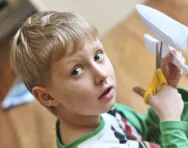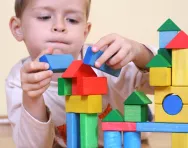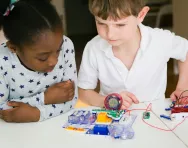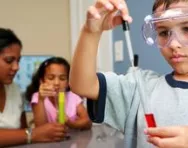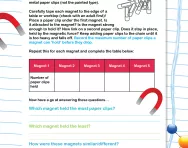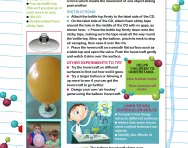How to create a budding engineer
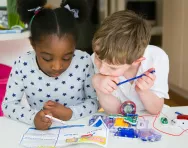
Primary engineering: what are the benefits?
‘There are many reasons why engineering and technology matters at primary level, but the main one is that through its practical nature, it engages children of all academic levels in maths and science,’ explains Susan Scurlock, chief executive of Primary Engineer.
Engineering gives children the opportunity to put maths, science and design technology theory into practice in a way that cements their learning.
‘Children respond really positively, because it helps them see the point of the principles they’re learning,’ says Gareth James, head of education at the Institution of Engineering and Technology. ‘As a result, they tend to perform much better.’
Playful experimentation, learning from failure and school engagement with professional engineers also helps to raise the achievement and aspirations of students of all abilities across the whole curriculum, according to a March 2017 report from the Royal Academy of Engineering and the University of Winchester’s Centre for Real-World Learning.
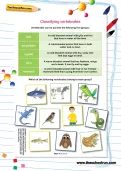

Download fantastic science resources today!
- Experiments And Science Fun pack
- Science Learning Programme for each school year
- All the instructions, questions and information you need
The engineering industry is also full of future job opportunities. ‘We live in a world that revolves around engineering, but research shows that most children have a rough idea of their future career path by the age of 10,’ explains Gareth. ‘It’s vital that children have early positive experiences of engineering, otherwise they’re turned off well before they get to GCSE level.’
How are engineering principles explored and explained in schools?
Although engineering isn’t included in the National Curriculum, its principles form an important part of programmes of study in other key subjects, including Design and technology (DT), science, maths and information and communication technology (ICT).
For example, the 2014 curriculum for DT includes requirements for children to:
- Design purposeful, appealing and functional products for themselves and other users based on design criteria
- Select from and use a wide range of materials and components
- Build structures, exploring how they can be made stiffer, stronger and more stable
- Understand and use electrical systems in products, such as bulbs, buzzers and motors
- Understand and use mechanical systems, such as gears and pulleys
Engineering principles can also be explored and explained through other areas of the curriculum. ‘For example, if a class is studying space, they could look not just at the stars and planets, but at the engineering and technology that has allowed us to explore them, or, if they’re learning about the Romans, they could look at how they engineered their roads and buildings,’ explains Gareth. ‘A knowledge and appreciation of engineering can be drawn in across the curriculum.’
Some schools take part in industry outreach schemes, where engineering students or professionals go into schools to talk about engineering or help with projects. Science and technology weeks are also a popular way to boost children’s understanding of engineering.
What sort of projects might your child be involved in?
Because engineering isn’t a standalone subject in primary schools, how it is taught will vary. But engineering projects that are commonly used include:
- Build a bridge out of drinking straws
- Design a vehicle that could drive on land and sea
- Create an aircraft that can transport an egg without breaking it
- Build a model of a tower that would strong enough to survive an earthquake
- Make a simple electronics circuit including a bulb and a switch
- Design and make a Christmas card with moving parts
Could engineering clubs and competitions inspire your child?
Many engineering organisations run clubs and competitions that aim to ignite children’s passion for engineering and technology. These include:
The FIRST® LEGO® League: an annual robotics challenge where teams of nine- to 16-year-olds (organised through schools or independently with an adult mentor) compete to design a solution to a problem using Lego Mindstorms. There’s also a Junior League for six- to nine-year-olds.
Young Engineers: a school-based engineering club that also runs national competitions, including Krazy Racers – using K’Nex to create a unique passenger vehicle.
Mini-Engineers: after-school classes, workshops and holiday camps where children build simple machines and learn STEM concepts using LEGO.
Imagineering: after-school clubs for eight- to 16-year-olds, where children use kits to make working engineering models.
Leaders Award: a competition for children aged five plus, where they interview a person working in science, technology, engineering or maths and then submit a report – which could be a video, podcast or drawing – about what they’ve discovered.
The engineering outreach programme Kids Invent Stuff gives 5-11 year olds the chance to have their invention ideas built and tested on camera; watch the videos on the Kids Invent Stuff YouTube channel to see amazing builds, from a robot shopping trolley to the world's first sneeze-activated flamethrower!
How can you build your child’s enthusiasm for engineering?
Talk about engineering:
Tap into your child’s interests, and discuss and explore the underlying engineering principles with them. ‘For example, if they're passionate about the sea, talk to them about the technologies that make underwater exploration possible,’ says Gareth. Try some hands-on learning and find out about engineering today and in the future.
This is Engineering, led by the Royal Academy of Engineering in collaboration with Engineering UK, tells the story of real young engineers from a variety of backgrounds who are making a difference through engineering in a variety of ways.
Get into online engineering gaming
We love Wired, a puzzle-platform game where you wire up electrical circuits to progress through the levels (free, it runs on Windows or Mac computers and needs a keyboard and mouse).
Skills Miner from Enginuity, the engineering skills organisation, will help your child find out if they’ve got what it takes to transit from the virtual to the real world of engineering. The game, which is based on Minecraft and aimed at all ages, uses sophisticated gaming techniques and algorithms to assesses players' aptitude for a whole raft of engineering skills, from Observation and Assessment to Resilience, Digital Competency, Problem Solving and Critical Reasoning.
Create with toys
‘Lego, Meccano and K’nex provide brilliant opportunities for children to design, construct and experiment,’ Susan says. Electronics sets are also fascinating for budding engineers.
Think long-term
To find out more about engineering jobs and why the UK desperately needs engineering talent, see the Tomorrow's Engineers website, with videos, tips and information for kids aged 11+. Your child can explore STEM activities, videos and career talks on the Big Bang World website.
Research engineering concepts in a hands-on way
We love the free bridge-building education materials from the Rochester Bridge Trust, specially designed to teach primary-aged children about civil engineering with lots of practical examples and activities.
Get out and about
Many popular day trip destinations offer the perfect way to explore engineering principles with your child, from the Science Museum to the National Space Centre. Visit UK Science Centres for a list of technology-themed days out.
More engineering
See inside How things work

From simple machines (cogs, pulleys, levers) to planes, vehicles and microwaves, See Inside How things work (Usborne, £9.99) reveals the science behind how things work and offers 90 flaps to lift and fantastic, detailed illustrations. Essential for answering awkward questions ("How does an escalator work?" or "How are cranes built so high up?") with accurate information!
What on Earth? Wallbook of Science & Engineering

The What on Earth? Wallbook of Science & Engineering contains more than 1,000 hand-drawn illustrations that highlight every major event in the history of maths, physics, medicine, building and more. Over two metres long when unfolded, this reference book is sure to be pored over for hours.

Give your child a headstart
- FREE articles & expert information
- FREE resources & activities
- FREE homework help












